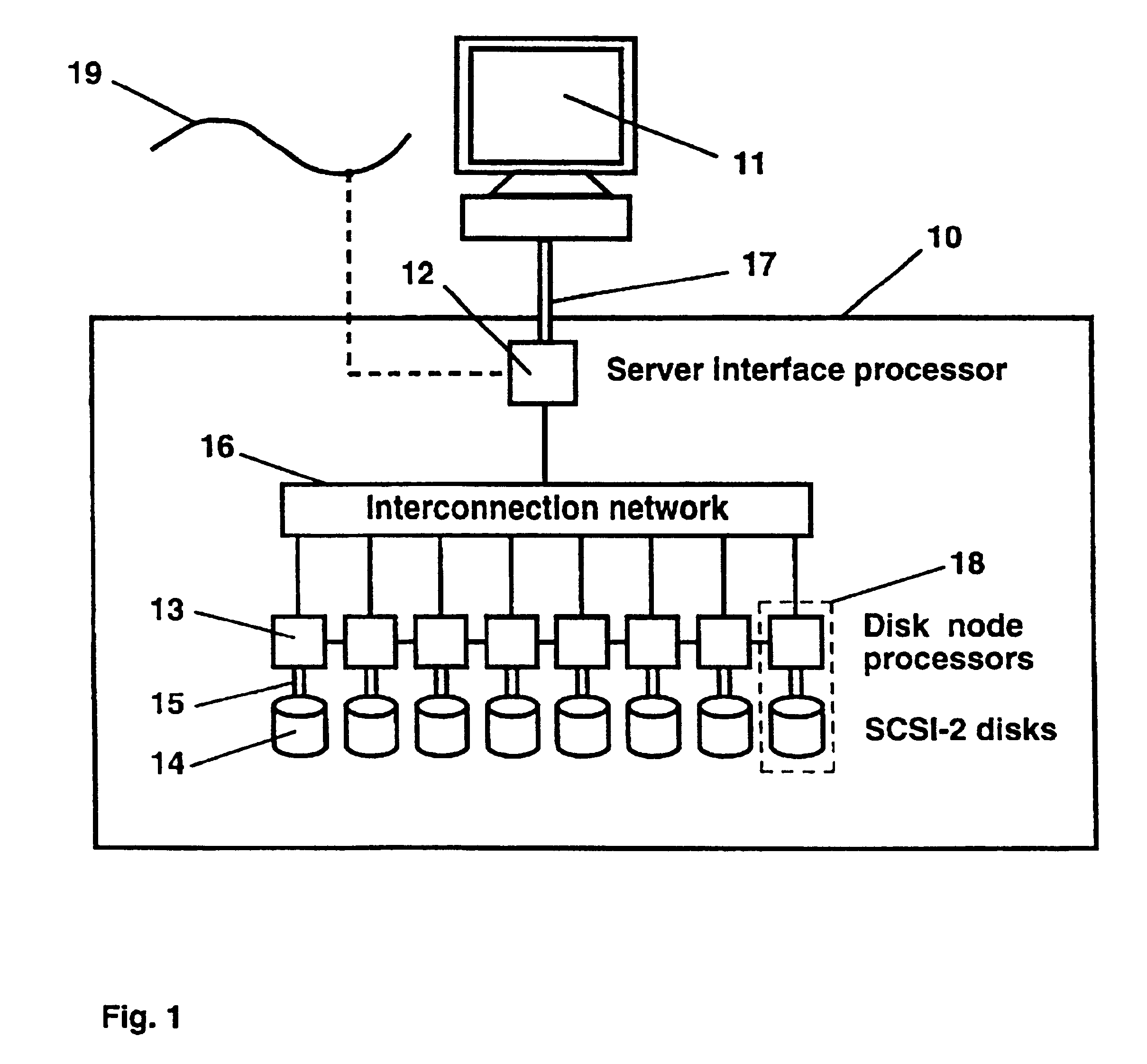Method and apparatus for a parallel data storage and processing server
a data storage and processing server technology, applied in the direction of image memory management, multi-processing architecture, instruments, etc., can solve the problems of insufficient storage bandwidth and processing capabilities of existing desktop computers and workstations, single-disk systems are too slow to provide the bandwidth necessary, and the cpu driving the disk array does not offer sufficient processing power to apply image access
- Summary
- Abstract
- Description
- Claims
- Application Information
AI Technical Summary
Benefits of technology
Problems solved by technology
Method used
Image
Examples
Embodiment Construction
Current apparatuses for storing, accessing and processing of image data are based on workstations connected to RAID disk arrays [Chen90]. RAID disk arrays connected to single processor workstations do offer higher storage capabilities as well as a higher throughput than single disks. However RAID disk arrays to not incorporate processing power for performing image scaling operations, image window extraction operations, image transformations or image processing operations. Such operations must be executed by the host processor.
The invented parallel storage server apparatus (FIG. 1) presents a cheaper alternative to image and multiple media storage devices based on workstation and RAID disk arrays. It includes a server interface processor 12 interfacing the storage system with a client computer 11 (host computer) or with a network 19, an array of intelligent disk nodes 18, each disk node being composed of one processor 13 and at least one disk 14, and an interconnection network 16 for...
PUM
 Login to View More
Login to View More Abstract
Description
Claims
Application Information
 Login to View More
Login to View More - R&D
- Intellectual Property
- Life Sciences
- Materials
- Tech Scout
- Unparalleled Data Quality
- Higher Quality Content
- 60% Fewer Hallucinations
Browse by: Latest US Patents, China's latest patents, Technical Efficacy Thesaurus, Application Domain, Technology Topic, Popular Technical Reports.
© 2025 PatSnap. All rights reserved.Legal|Privacy policy|Modern Slavery Act Transparency Statement|Sitemap|About US| Contact US: help@patsnap.com



